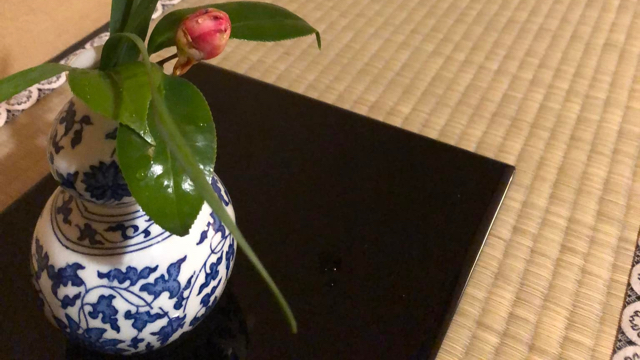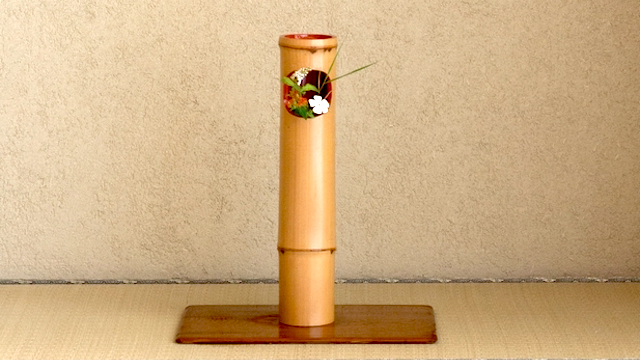
Hanare is a vessel used to put tea flowers in the tea ceremony, and there are metal, porcelain, pottery, bamboo, and baskets.
There are various kinds of flower vase, such as ``kakehanairi'' that hangs on center nails and flower nails on alcove posts, ``tsurihanairi'' that hangs from the ceiling or hanging on the floor, and ``okihanairi'' that is placed on the floor. If the floor is tatami matted, a thin board is laid underneath, but in the case of a basket flower case, no thin board is used.
For the flower vases, ``shin'' refers to copper, copper, and karamono celadon, ``gyo'' refers to glazed Japanese ceramics, and ``grass'' refers to bamboo, baskets, gourds, and unglazed ceramics. increase.
It is said that Sen no Rikyu cut bamboo from Mt. Nirayama and made it when he returned to Odawara.
Also, in a tea room, it is formal not to decorate both the kakemono and the flowers at the same time, and to display both together is called 'morokazari', but this is treated as informal, and if the kakemono is long, the flower The vases are hung on the nails of the alcove pillars, and in the case of horizontal vases, the vases are placed in the center of the bottom floor. If you want to put a vertically long kakemono on the bottom as an assortment, put it to the side in one-third of the place near the lower seat.

Metal vases and Chinese ceramic vases are considered to be of high rank, followed by Japanese glazed and unglazed ceramic vases.
陶磁器
Madake bamboo is often used and is suitable for handicrafts. You can enjoy the expression of shapes and individuality such as "sun-cut", "single-cut", and "double-layered" like shakuhachi, using bamboo knots, distortion and stains.
竹
Basket-shaped flower vases made of woven bamboo, rattan, and wisteria vines are collectively called 'kagohana-ire'. (Bamboo baskets, rattan baskets, etc.)
籠